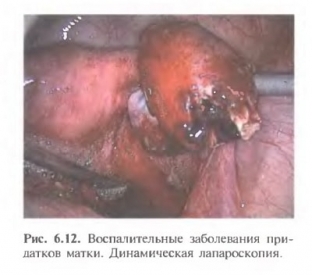Thanks to the active development of modern science and medicine in particular, the possibilities of diagnosing and treating various diseases are replenished every year with more and more advanced and effective methods. Competent doctors try to select the most gentle and effective methods for eliminating pathological processes. But situations in which it is impossible to do without surgical intervention occur quite often. With certain indications, only surgical methods for the treatment of inflammatory diseases of the female genital organs will help to achieve the maximum therapeutic effect.
Methods of surgical treatment of inflammatory diseases in gynecology
Surgical treatment of inflammatory diseases of the female genital organs involves the implementation of a variety of surgical interventions in order to eliminate the pathological process as efficiently and voluminously as possible. Since all inflammatory diseases of the female genital organs, with an untimely or ineffective start of conservative therapy, threaten the occurrence of dangerous complications, in particular, the spread of the pathological process to neighboring structures of the small pelvis, surgery in many cases is the only most effective method of treatment.
Surgical treatment of inflammatory diseases in gynecology:
- puncture helps to cure purulent formations of the uterine appendages;
- laparoscopy is an effective method for the treatment of inflammatory diseases in the pelvis;
- when inferomedian laparotomy is the most effective treatment option.
Puncture helps to cure purulent formations of uterine appendages
In the presence of purulent foci in the pelvic cavity, an effective method of treating inflammatory diseases of this kind is the puncture of formations through the posterior fornix of the vagina under the control of ultrasound scanning. Purulent foci can form with pyosalpinxes, pyovars and abscesses of the rectovaginal cavity. After puncture, aspiration of the contents of the abscess is performed, followed by bacteriological examination and washing of purulent cavities with solutions of antiseptic and antibacterial drugs. With the help of this method of treatment of inflammatory diseases in the small pelvis, it is possible to eliminate all acute manifestations of the process and, if necessary, perform organ-preserving surgical interventions in the future.
Laparoscopy is an effective method for the treatment of inflammatory diseases in the pelvis
Laparoscopic treatment of inflammatory diseases in gynecology is one of the most gentle and effective methods of surgical intervention. Laparoscopy allows you to achieve the following goals in the treatment of inflammatory diseases:
- to assess the severity and prevalence of the inflammatory process in the pelvis;
- perform lysis of formed adhesions;
- open and remove purulent formations of the uterine appendages;
- perform drainage and sanitation of the abdominal cavity;
- perform intra-abdominal perfusion and infusion of drug solutions.

In order to preserve the reproductive function of a woman, it is possible to perform a dynamic laparoscopy in the future, during which the rate of resolution of the inflammatory process is fixed, and various necessary medical manipulations are performed. Using this method, it is possible to carry out anti-inflammatory therapy as efficiently as possible, as well as prevent the formation of adhesions in the small pelvis.
When Inferomedian Laparotomy is the Most Effective Treatment
Open surgical operations, namely, lower median laparotomy, which is performed in gynecology, is indicated for ruptures of purulent formations of the ovaries and fallopian tubes, diffuse and diffuse peritonitis, the presence of intra-abdominal abscesses, as well as in case of insufficient effectiveness of therapeutic measures within 24 hours after drainage of the abdominal cavity using a laparoscope, and the inability to perform laparoscopic intervention. In addition, open surgery is preferable in patients with purulent tubovarial formations in the pre- and postmenopausal period, if necessary, removal of the uterus. The volume of open surgery for the treatment of inflammatory diseases of the reproductive organs of a woman is determined by the age of the patient, the prevalence of the inflammatory process, the degree of destructive changes,






Add a comment